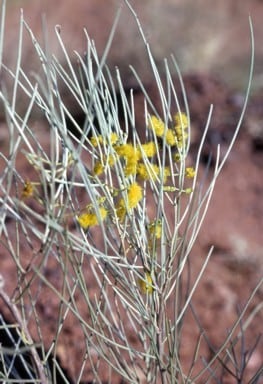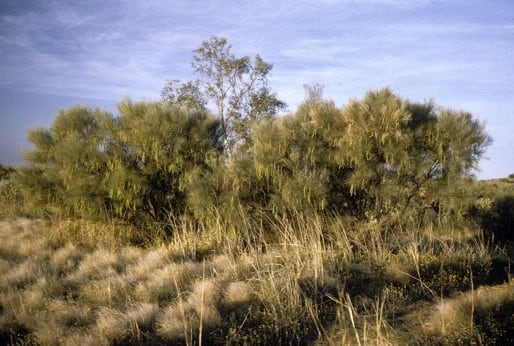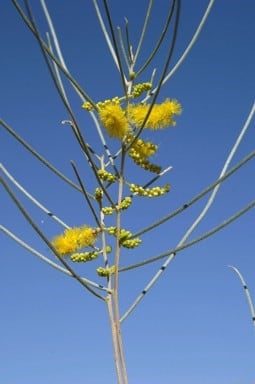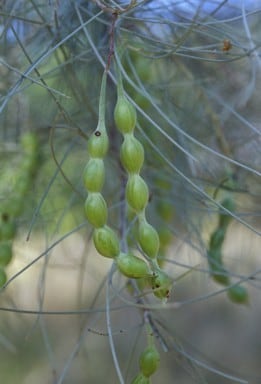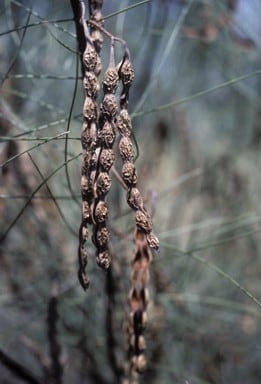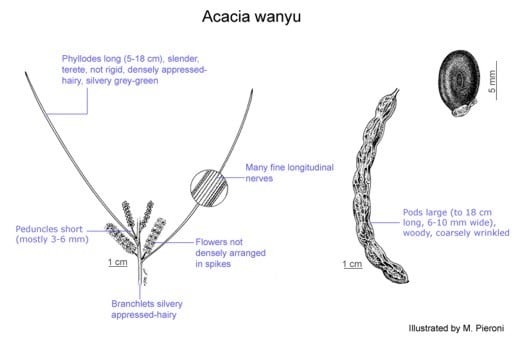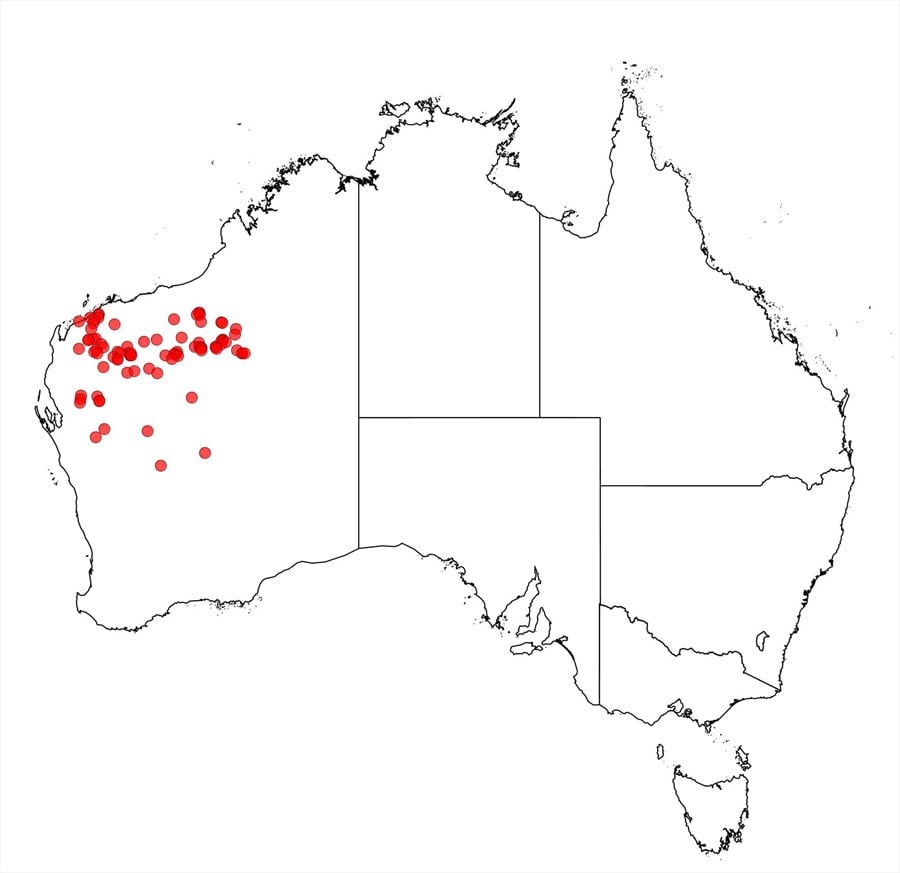Acacia wanyu Tindale
WATTLE
Acacias of Australia
Common Name
Wanyu, Silver-leaf Mulga
Family
Fabaceae
Distribution
Occurs from near Pannawonica S to Pingandie Stn (S of Paraburdoo) eastwards along the southern perimeter of the Pilbara region to the vicinity of Rudall R., Great Sandy Desert; also an outlier at Winderie Stn, E of Shark Bay, W.A.
Description
Shrub or shrubby tree 1.5–4 m high. New growth golden-sericeous. Branchlets sericeous, glabrescent. Phyllodes erect, filiform, straight to incurved, terete, 5–18 cm long, 0.8–1.3 mm diam., acute, thin-flexible, silvery sericeous (golden-sericeous when young), with numerous fine slightly raised nerves; glands 1–3, with lowermost 2–9 mm above pulvinus. Inflorescences simple, 2 per axil; peduncles 3–6 (–10) mm long, sericeous; spikes 11–25 mm long, 5–6 mm diam., slightly interrupted, light golden. Flowers 5-merous; sepals 1/3 as long as petals, united. Pods pendent, ±moniliform, straight or slightly curved, to 18 cm long, 6–10 mm diam., woody, brownish, silvery sericeous to subglabrous. Seeds longitudinal, broadly elliptic, 6–8 mm long, dull, brown; aril terminal, crested.
Habitat
Grows commonly along creeks and drainage lines, in often stony clay or loam, loamy sand, clay, clay loam and sand, in association with mulga and other Acacia spp. in low scrub to tall shrubland on plains and similar areas of low relief.
Specimens
W.A.: 4 km E of Winderie HS, W.Edgecombe 14 (PERTH); upper Rudall R. area, B.R.Maslin 2048 (BRI, CANB, K, NSW, PERTH, US); 4 km W of Hill Z, c. 124 km SE of Shay Gap, K.Newbey 10121 (MO, PERTH); Barlee Ra., Henry R., R.D.Royce 6543 (PERTH); 7.2 km towards Mt Tom Price from North West Coastal Hwy, M.Trudgen 2321 (CANB, PERTH).
Notes
The possibility of hybridisation has to be considered, for some specimens appear to combine the narrow, nearly flat phyllodes that characterise A. cuthbertsonii subsp. linearis with the elongate, narrow, moniliform pods that mark A. wanyu (e.g. Neds Creek Stn, A.A.Mitchell 1280, PERTH). Both taxa occur on Winderie Stn, ENE of Shark Bay.
Very close to A. cuthbertsonii subsp. linearis and perhaps better treated as a third subspecies; A. cuthbertsonii subsp. linearis is distinguished by its normally compressed (but ranging to terete or flat), subrigid phyllodes, slightly shorter calyx and non-moniliform pods, although the pods may be shallowly constricted.
FOA Reference
Data derived from Flora of Australia Volumes 11A (2001), 11B (2001) and 12 (1998), products of ABRS, ©Commonwealth of Australia
Author
Minor edits by B.R.Maslin & J.Rogers
B.R.Maslin, R.S.Cowan
This identification key and fact sheets are available as a mobile application:
URL: https://apps.lucidcentral.org/wattle/
© Copyright 2018. All rights reserved.
